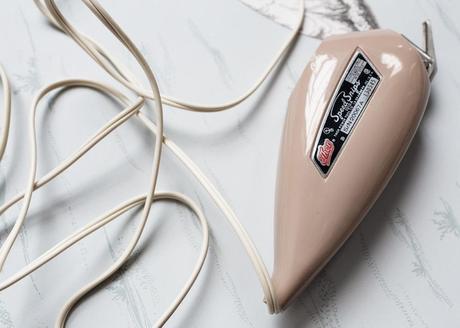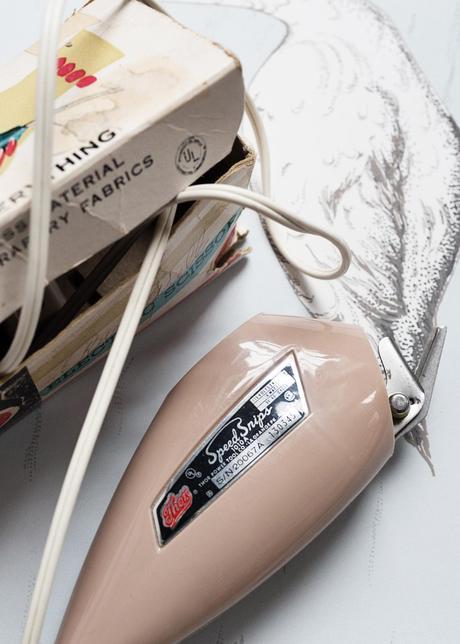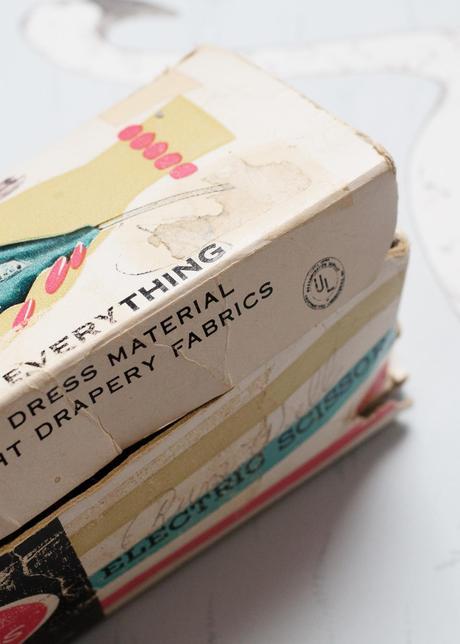
Why do I like vintage? Except for the speed of communication, medicine, electricity and maybe a few other things, everything is recycled. DaVinci knew how to fly, the Egyptians used make up and the Chinese made beautiful silks thousands of years ago. Today, most things are remade and there is very little newness. The future is in the past.
About 4 months ago, I was gifted a box of vintage sewing goodies. It originally belonged to the gifter’s grandmother and inside were doodads so delicious, any sewer would want to eat them. Okay, not really, but any sewer would toy with the idea of preserving the contents rather than putting them to use. Myself included. The packaging, its colors and its designs were and still are incredible. What happened to that kind of graphic integrity? Seems like it was thrown out the window along with handkerchiefs and pantyhose. But it would be a shame to leave them in the box for good. Would I sew a garment and hang it in my closet forever? If the future lies in the past, I had to find a way to keep the memories of these items but also put them to work. So, I started taking pictures of a few and uploading them to Instagram with the hashtag #thewaysewingusedtobe. To my surprise, a couple weeks later, other people started posting their goodies as well. I can’t believe it, but today, there are over 150 images! Thank you for being a sewing nerd with me. Is it just me or how cool is it that there is now an archive of the way sewing used to be?
I want to continue this little initiative and start a monthly theme – scissors. If you’re like me, the only variety you know are Gingher or the cheap-oh alternative found at Joann’s, Michaels or other local craft stores. A quick search on Ebay and you’ll quickly learn just like I did that in the 50s, 60s and 70s, there were more choices. Many more; even electric scissors! I’m sure people in the 60s thought they were so high-tech too! For less than $15 dollars, I bought a pair of Thor Speed Snip Electric Scissors. According to the instruction sheet, they were “intended for the 40 million women who sew creatively.” The manual continues, “The dramatically new way for accurate cutting of cloth, fabrics, dress goods, drapery materials, seating, etc. Completely eliminates chances of sore fingers and cramped, tired hands. Small, compact, durable. Safe, even for children.” A little online research and I learned that Thor was founded in 1893 as the Independent Pneumatic Tool Co. by John D. Hurley, John Hopkins (then mayor of Chicago) and Roger Sullivan (a politician). In 1953, the name was dropped in favor of Thor Power Tool Co., but the same Thor logo was kept. They acquired Speedway Manufacturing Company in 1954 and incorporated its name and brands into the Thor family. Thor was best known for handheld power tools and had factories in Cicerio and La Grange Park, Illinois. The company was later acquired by Stewart-Warner Corp and by 1988, all products with the Thor name were replaced with Stewart-Warner.
So, for the next month or so, I’ll be posting the various vintage scissors I’ve acquired on Instagram with the same hashtag, #thewaysewingusedtobe. Feel free to join in this theme, but don’t feel pressured that only scissors are welcomed. There is room for all vintage sewing notions!






